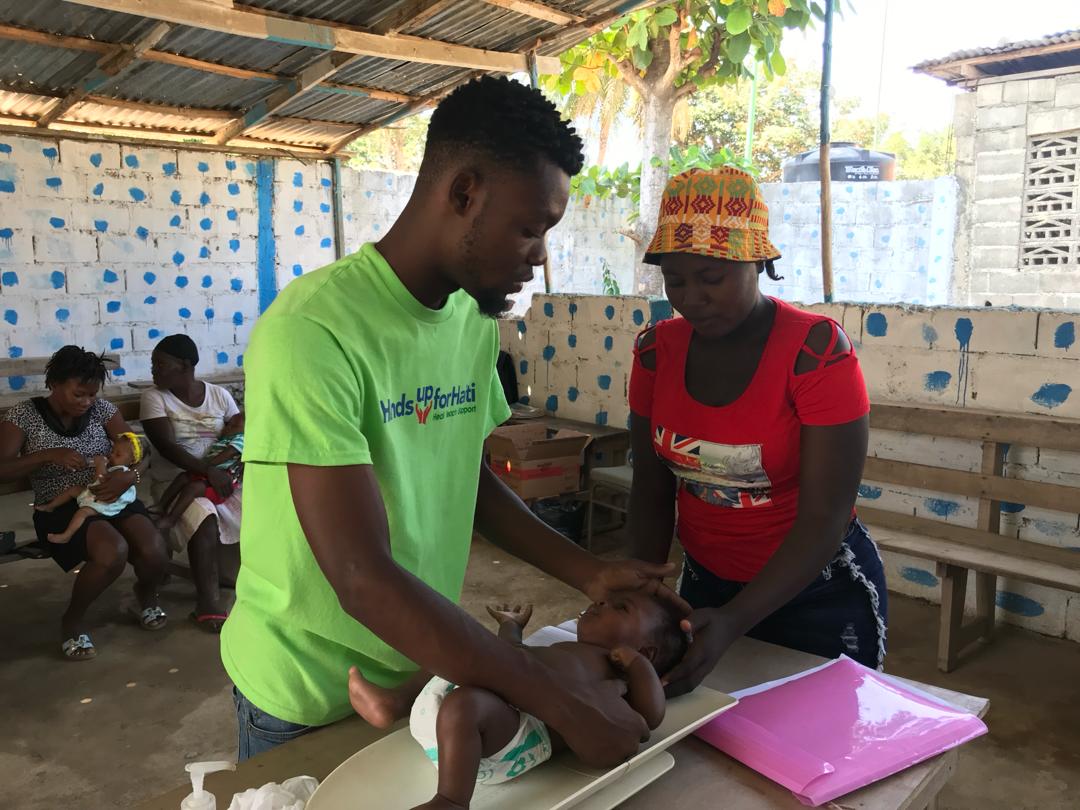by Mary Ann LoFrumento
“There is a place in the city where no one goes and the children are very sick.” So reported Francisco, a doctor on the medical staff of the UN Peacekeeping force in Haiti. Our friends at Haiti Hospital Appeal had introduced us. Francisco is an officer in the Chilean battalion, the UN force responsible for helping the people of Cap Haitien. We were sitting around a wide nondescript table in the officers’ building. It was the beginning of the rainy week and I was still worried about getting my team back to Cap Haitien. We were served expresso coffee, tea, and biscuits as Francesco explained the situation.
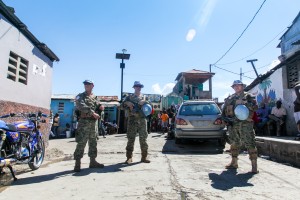
Members of the Chilean peacekeeping force securing the streets in La Fossette
La Fossette is a slum area that borders the same river as Shada, on the other side of the bridge. As efforts to redevelop Cap Haitien begin, plans include building a new bridge to replace the ailing old one, and the homes and businesses in this area may be slated for removal in the next year. This has resulted in even more neglect from the city government. The commander explained that, “Even the police don’t go there. But we try to help the children who live there.” They needed our team and we needed places to work. But I was concerned about the danger. “No problem,” the commander added. They would provide our escort and security. We would provide the medicine. Where will we be able to hold the clinic? “Don’t worry, we have a nightclub.” A nightclub in an unknown slum neighborhood where even the local police don’t go. “Please” Francesco said, “I have never seen such sick children.” I was thinking that I had lost my mind. But I assured them that if I could get my team back, we would hold the clinic on our last day. We shook hands and departed.

Getting organized. Dr. Mary Ann LoFrumento supervises the team setting up the stations.
So now it was Friday, the last day we would be working, and my team was excited to be going to a new location, one in which they were greatly needed. Some of our returning volunteers had experience working at our clinic in Shada. But in Shada, although it is also considered a dangerous area, Hands Up for Haiti is known and welcomed by the local community workers. The people know what we have done for the community and our Haitian health workers provide the women and children with ongoing medical care in Shada. Here in La Fossette, however, we were “blancs”, a term that refers not to the color of our skin, but to the fact that we were foreigners, unknown to the community, and with no evidence that we would return.
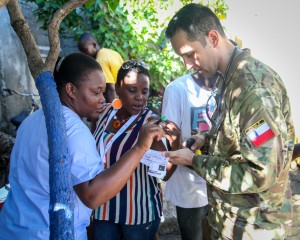
Nurse Youselene, Translator Sondra, confer with Doctor Francisco.
We left our vans, surrounded by an escort of soldiers armed with machine guns, pistols, and machetes. This was not the usual way we engage a community and I confess I was uneasy with the plans. But the day went on without any problems. The team was so good at setting up an outreach now, it only took a few minutes to set up in the brightly colored “nightclub” which was really an open air pavillion. The bar transformed into the pharmacy and the tables became our stations. The people were respectful and appreciative and our team saw about 120 children.
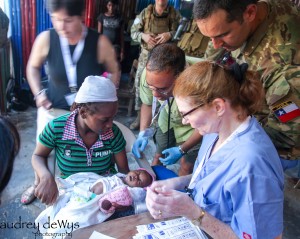
A dehydrated infant is rushed through triage.
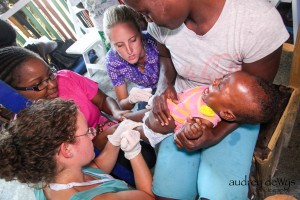
Nurses waste no time treating a child with pneumonia.
A few infants were quite sick. One two month old with Down’s Syndrome was in congestive heart failure, probably from an undiagnosed congenital heart defect. We treated the baby with emergency medications and then sent the baby to our contacts in Justinien Hospital and Sacre Cour in Milot.
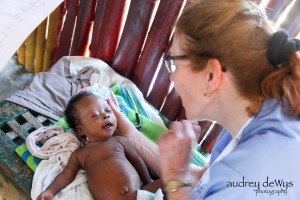
Nurse Judy McAvoy lovingly attends to an infant with Down’s Syndrome who is in heart failure.
Were the children any worse than the children we see in Shada? I do not think so. But this experience made even more clear to me that how Hands Up for Haiti approaches medical care is the right way to do this. In La Fossette, we were faced with an emergency situation and we helped, but this is not the ideal. In contrast, by engaging the community in Shada as we have, we continue to earn the trust of the people who live there. The community health workers, like Madame Bwa and our clinic administrator Miguel Ange, work to ensure that the sickest patients are seen and that there is follow up. We support a doctor and nurse for the clinic when we are not there and we provide for education on prenatal care, nutrition and even sexual education. We are invested in the community and feel a part of the community. In LaFossette, we were visitors.
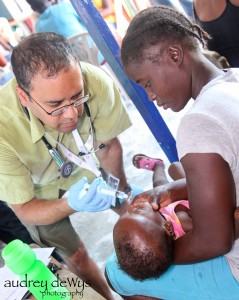
Dr.Hemant Kairam makes sure this child is treated for an infection.
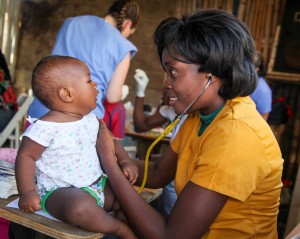
Dr. Mathieu, one of our Haitian physicians connecting with a little patient.
The UN forces in Haiti, called MINUSTAH, have been criticized by some as not helping and possibly hurting Haiti after the earthquake. I can’t comment on all the forces, but this battalion from Chile wanted only to help and it was an honor to work with them. It is also clear that relying on the peacekeeping force to provide the only medical care for this community makes no sense at all. This is hit and run medicine and not in line with the goals of sustainable health care. The members of the Chilean battalion are compassionate and really care, but this is where the city government and the Ministry of Health need to step in, as they did in Shada after we rebuilt the clinic.
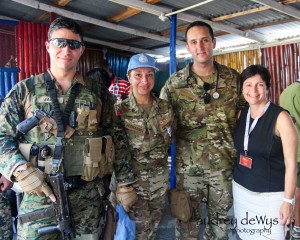
Working together. Members of the Chilean force: including head of security, Jaguar, nurse Fernandez and Dr. Francisco Garcia and Dr. LoFrumento.
Our challenging mission had come to an end, but a lot of work remains to be done. The initial days of rain and flooding had been replaced by sunshine and hope. Going forward, Hands Up for Haiti will continue to advocate for and work towards a better system of health care for all Cap Haitien neighborhoods, including La Fossette. We will continue to support our clinic in Shada, where we can create sustainable programs to serve the women and children of some of the poorest neighborhoods.
Thinking back on the whole experience, I believe we were successful because of the strong connections with our Haitian colleagues and our partners on the ground, working together, learning together, and healing together.
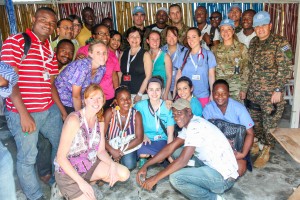
Our team with the members of the Chilean peacekeeping force.
Photographs by Audrey DeWys


